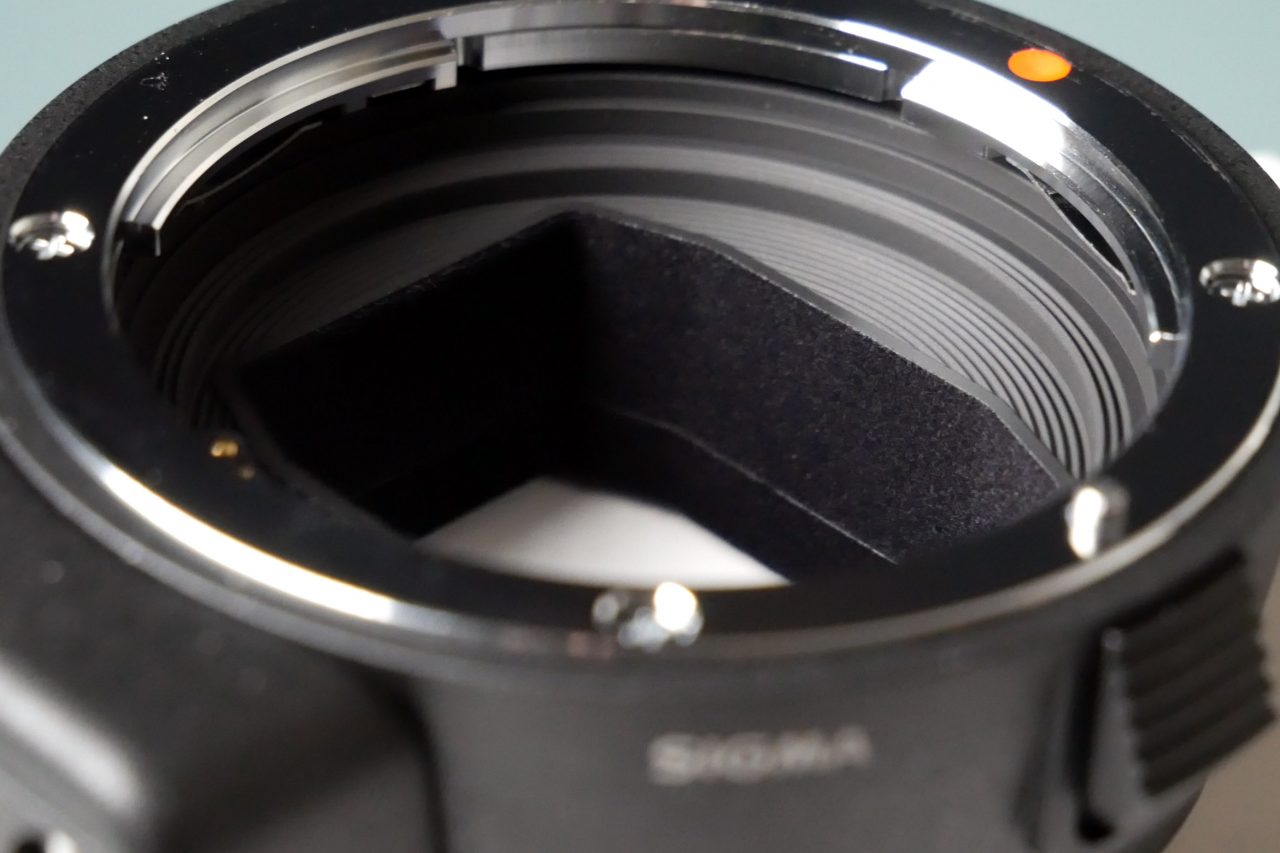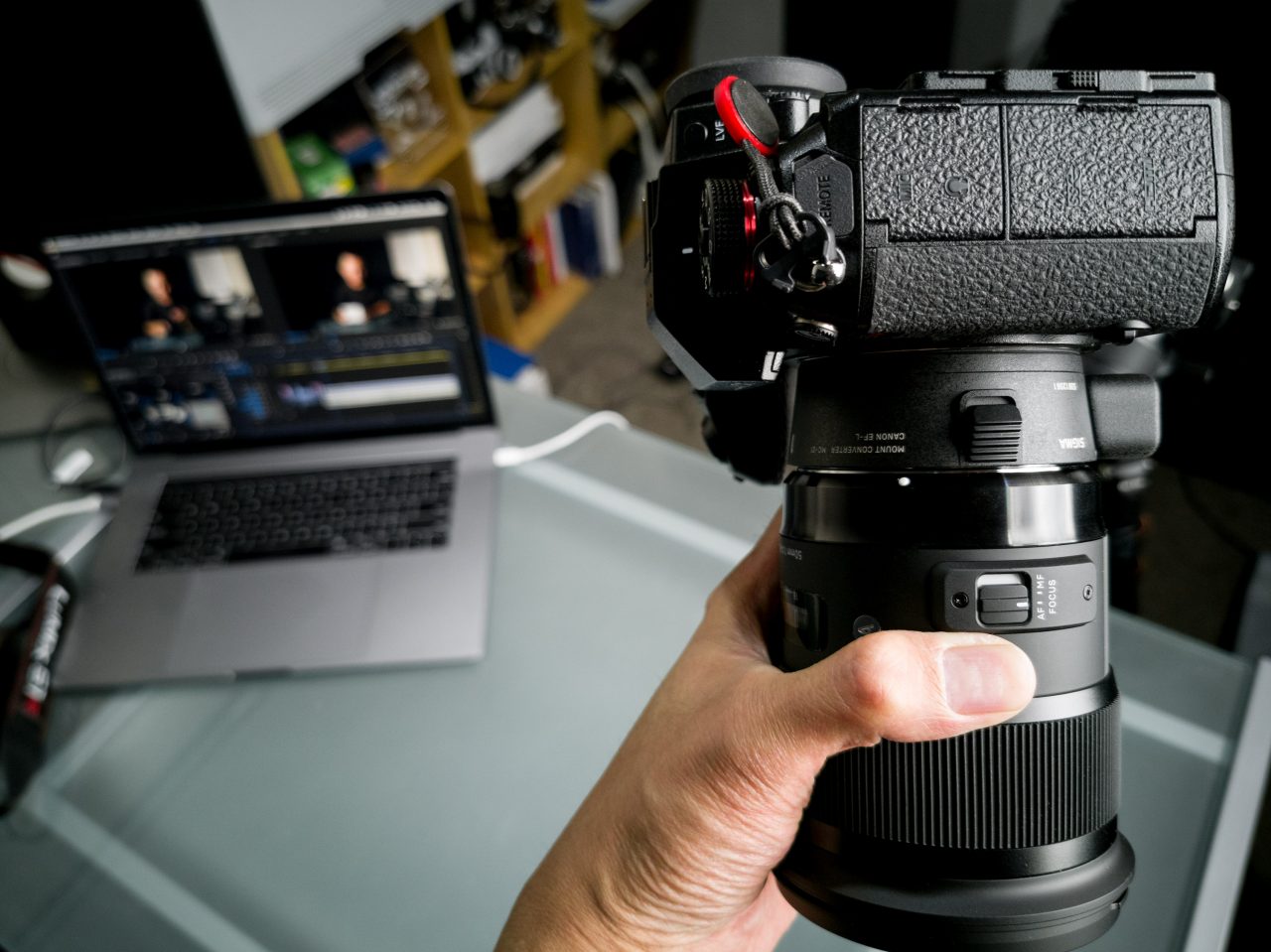When the L-mount alliance was announced, one of the most exciting and completely unexpected thing was that Sigma was also part of the alliance and will be creating lenses and cameras for the L-mount.
This is very exciting because Sigma has created many very high quality yet affordable lenses in the last few years and their Foveon sensor cameras also captured the hearts of a small but loyal fans. While the native L-mount lenses and cameras are still a little while away before they will hit the market, Sigma has just released their first L-mount product, the MC-21 converter which can be used to adapt Canon EF or Sigma’s own SA mount lenses to L-mount camera.
Originally Sigma said the converter can be used on the Panasonic S series cameras and also all the existing Leica L mount cameras. Unfortunately just before the MC-21 was released, Sigma told us it would not be compatible with the current Leica mount due to specification changes. Exactly what that means I don’t really know, and it is certainly disappointing. However it sounds like all the future L mount cameras from all the three companies will be compatible with this converter.
Since SA mount is not really popular and I guess 99% of people who are interested in this converter would want to use it to adapt EF mount lenses, I’m reviewing the EF mount version of the MC-21 converter.
The converter is made of metal and feels very well made. When mounted between the Panasonic S1R and a Sigma 50mm ART f/1.4 EF mount lens, everything feels nicely jointed together with very minimal amount of play.

Black Flocking inside the converter to reduce lens flare
Unlike the Sigma MC-11 converter (for Sony E mount), this MC-21 doesn’t have any USB port on it. Why is there no USB port on the converter? Does it mean it can’t be updated at all in the future? I’m trying to seek answer to that and will update this review if I hear any answers back.
There is a tripod mount at the bottom of the converter. This provides a more balanced tripod mounting point when you are attaching a longer and heavier lens to it. If you are not planning to use any larger lens with the converter, you can also remove the tripod mount using the provided allen key.
The converter has electronic contacts and processing chips inside. Autofocus, auto exposure and EXIF data recording are all maintained when used with compatible lenses. You can also adjust the aperture using the camera dial just like a native L mount lenses. If your lens has optical image stabiliser and your camera has IBIS, you can enable only one of the stabiliser.
The converter includes the lens profile for the 29 supported Sigma EF mount lenses. The profile includes distortion correction, vignetting correction, chromatic aberration correction and also the DFD autofocus profile. This means the lens should behave very similar to a native L mount lens mount on a L mount camera especially for JPG shooters.
For all the future Sigma lenses, the profile will be included in the lens itself. It’s quite similar to how Panasonic implement DFD when it was originally introduced. The camera has the DFD profile for the existing lenses while the newer lenses will include the profile themselves.
To test how well the MC-21 converter performs, I’ve borrowed a Panasonic S1R from my friends at Panasonic. The camera is running firmware 1.0 and I’ve also borrowed a Sigma ART 50mm f/1.4 lens as well.
After I’ve connected the Sigma 50 f/1.4 ART lens to the converter and the camera, I turned on the camera, and noticed the little LED indicator on the converter lights up in green colour. It means the lens is supported and the lens has latest firmware already so everything should work fine. But if the light is orange, that means you’ll need to update the lens firmware.
One thing I need to mention first is that the MC-21 only supports single autofocus operation. Continuous Autofocus is not enabled in both photo and video mode. This is definitely one big drawback of this converter. I’m really hoping Sigma can do something to overcome this limitation in the future (assuming there is some way to update the firmware due to the lack of USB port on the converter)
It means all the testing will be single autofocus only.
And the autofocus performance is .. well OK. It’s definitely not fast, comparing it side by side with the native Lumix 50 f/1.4 there is a huge difference in autofocus speed. The lens also hunts quite a bit when trying to find it’s target. But it is accurate and while the speed is not fastest, is still useable when shooting static or slow moving subjects. The autofocus also works quite well when shooting under low light condition. If you watched my review video, you would notice the autofocus still work reasonably well when I was shooting at ISO 25600 at f/1.4 1/100s.
When shooting video, single autofocus performance is similar to the photo mode but with slightly slower speed. It is accurate and reliable enough if you just want to switch the focus point during recording it will work fine. But don’t expect the autofocus operation to be fast or smooth.

After testing the MC-21 converter with the Sigma EF lens, I also wanted to see how it performs with the Canon EF lenses. This is something that should work but Sigma doesn’t promise the compatibility for obvious reasons.
I made a trip to Auckland Camera Center . and tested the following lenses with the MC-21 converter:
50mm f/1.8 STM
50mm f/1.2L
16-35mm f/4L
100mm f/2.8L macro IS
With the 50mm f/1.8 STM, the autofocus speed is slower than the Sigma 50mm f.14 ART. But otherwise autofocus performs very well.
With the 50mm f/1.2L, there is noticeably more hunting but the autofocus speed is similar to the f1/1.8 STM. Result is also accurate and reliable.
With the 16-35mm f/4L, the autofocus speed is quite a bit faster and very small amount of hunting than the two 50mm lenses. Probably due to the much deeper depth of field so the autofocus doesn’t need to work quite as hard. Most people should be quite happy with the autofocus performance with this ultra wide angle lens.
With the 100mm macro lens, while the autofocus speed is also a bit slow, surprisingly I don’t notice too much hunting. The autofocus operation is a bit slow but reasonably smooth. Not too bad at all.
Overall, the MC-21 appears to work very well with the Canon EF lenses as well. While there is definitely a bit slower and more hunting, this is kind of expected as there is no DFD profile included for any of these lenses.
If you are a landscape photographer, portrait photographer or do lot of product photography, the Sigma MC-21 allows you to migrate your Canon EF mount lenses to a L-mount camera easily and retain most of it’s feature and performance. It is also a good way for people to have access to special lenses that is not currently available for the L-mount system as there is a lot of good and affordable EF mount lenses available (both new and used) in the market.
On the other hand, if you are a sports photographer or usually need to shoot fast (or even semi-fast) moving subjects, then the slow autofocus speed and lack of continuous autofocus support with the MC-21 would not be suitable for you.
Hopefully Sigma will (and can) improve the performance of the MC-21 a bit in the future as that will certainly allow Canon shooters to migrate to L-mount system smoother.